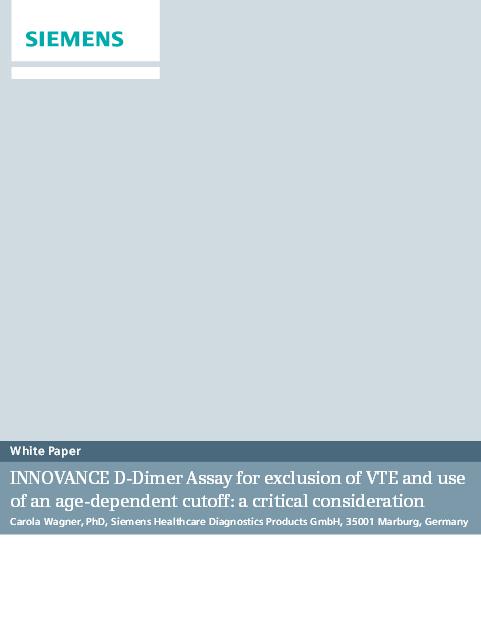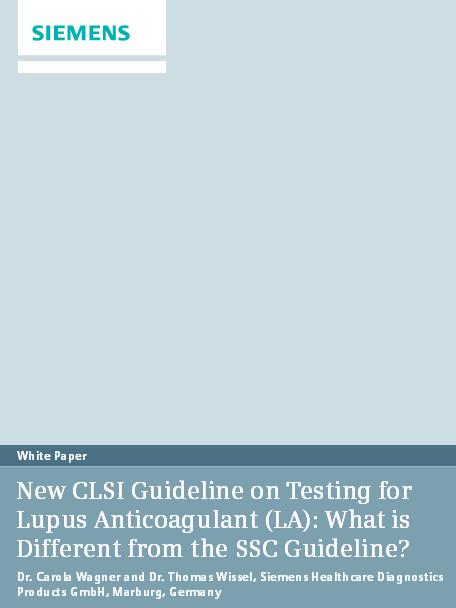World Thrombosis Day

World Thrombosis Day (WTD) is an initiative spearheaded by the International Society on Thrombosis and Hemostasis (ISTH) to raise awareness about the prevalence of blood clots and the actions individuals can take to mitigate their risk of this disease. WTD supports the World Health Assembly’s global target of reducing premature deaths due to non-communicable disease by 25% by 2025.
While thrombosis is the primary factor behind the three leading causes of cardiovascular death—heart attack, stroke, and venous thromboembolism (VTE)—the initial launch of WTD will emphasize prevention of VTE (responsible for an estimated 600,000–800,000 deaths in the U.S. and Europe each year1,2). However, over time WTD will expand its focus to address all thrombotic disorders.
Clinical Risk

More than two–thirds of blood clots in the leg result from being in the hospital, which is the leading cause of preventable deaths.3 Furthermore, certain surgeries, including hip and knee and surgeries for cancer, put a patient at higher risk.
Diagnostic Education

Clinicians are challenged not only by the prevalence of thrombotic disease, but by the broad range of disorders that can be responsible for it. In an effort to share diagnostic strategies and best practices for thrombophilia, Siemens Healthineers offers an extensive selection of educational resources. Check out some of them below.

Pulmonary Embolism Diagnosis in Pregnancy: How Bicêtre Hospital Overcomes Imaging Challenges
When PE is suspected, a computed tomography (CT) scan may be recommended in some countries as a quick response. Diagnosing cases of PE presents particular challenges, however; pregnancy-related physiological changes have the potential to impair image quality to such an extent that a diagnosis may no longer be possible. At Bicêtre University Hospital, France, a special scan protocol has been developed to overcome these challenges and to address the specific needs for PE evaluation for pregnant patients in emergency situations.

INNOVANCE LOCI F 1+2 Assay*: The In Vivo Thrombin Generation Marker for Clinical Routine Use
F1+2 is a sensitive marker of in vivo thrombin generation, with elevated F1+2 levels indicating increased coagulation activation, e.g., in thrombotic states, consumption coagulopathy, or cancer. Learn more about the measurement of F1+2 levels and their clinical indications.

D-dimer Testing for VTE Exclusion: Impact of an Age-adjusted Cutoff*
D-dimer levels are known to increase with age; this presents a challenge when using D-dimer testing for the exclusion of venous thromboembolism (VTE) in elderly patients. Learn about the performance of the INNOVANCE® D-Dimer assay from Siemens Healthcare Diagnostics when an age-adjusted cutoff was applied in studies conducted by both Siemens and the University Hospital of Münster.

Antiphospholipid Syndrome and Testing for Lupus Anticoagulants
Discover the results obtained with routine APTT reagent testing.

New CLSI Guideline on Lupus Anticoagulant Testing
In 2014, the new Approved Guideline H60-A, Laboratory Testing for the Lupus Anticoagulant, was released by the Clinical and Laboratory Standards Institute (CLSI). Read the recommendations on topics ranging from proper sample handling to the interpretation of test results and gain a better understanding of how this latest guidance differs from the SSC guideline released in 2009.

Thrombosis Risk Decision Tree
Tool designed to share best practices on how to perform and interpret thrombophilia tests that aid in better patient management.

Thrombin Generation Cascade
View the process of clot formation and learn about the fundamental role that thrombin plays in driving and regulating clotting activity.

Thrombophilia Cascade
View the processes involved in thrombophilia, a condition that leads to unwanted clot development, and how the activity of therapeutic agents can counteract its effects.
Webinars
For more information on WTD, please visit WorldThrombosisDay.org.